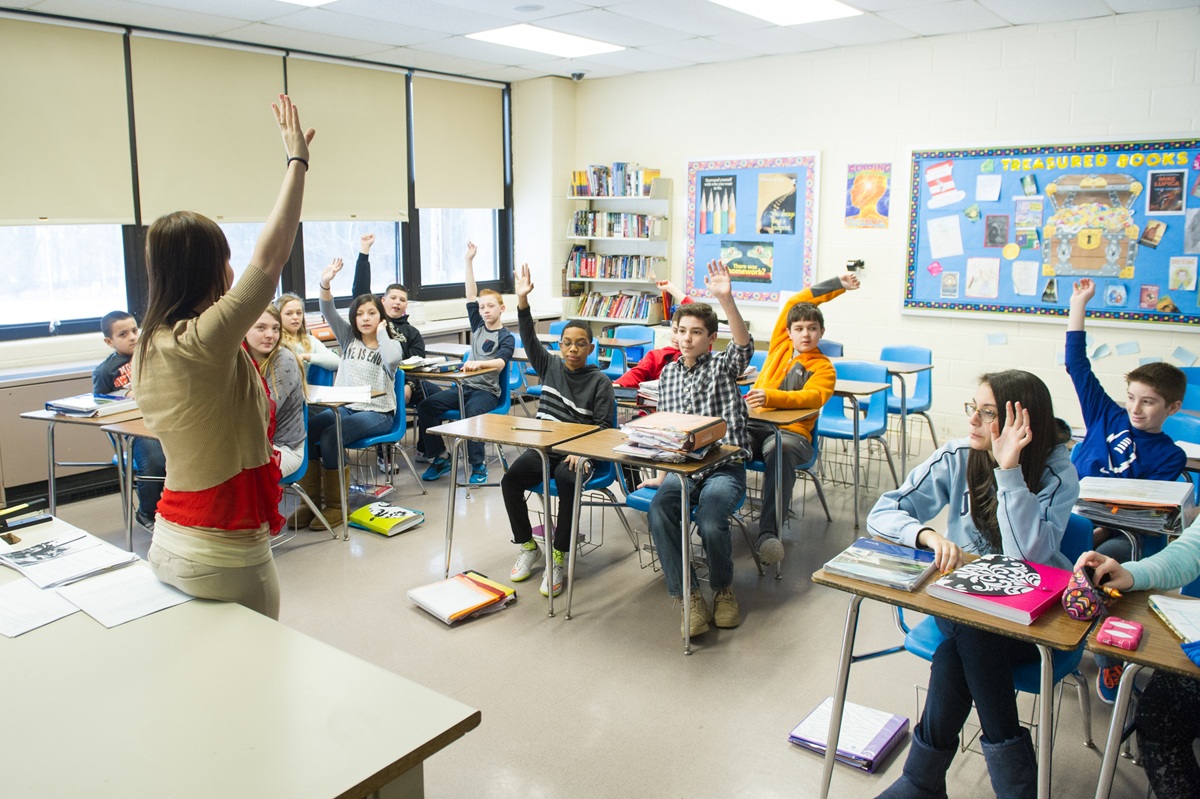Affordable Primary Science Tuition Singapore for All Learning Needs
Affordable Primary Science Tuition Singapore for All Learning Needs
Blog Article
Checking Out the Different Teaching Methods in Primary Science Education And Learning Today
The landscape of key scientific research education and learning is progressing, with different training strategies gaining importance in modern class. Inquiry-based discovering, hands-on experiments, and the integration of innovation are redefining how instructors involve young minds. Furthermore, joint strategies and separated guideline are being utilized to cater to the diverse needs of pupils, boosting both interaction and understanding. As we analyze these methods, concerns develop concerning their efficiency and the implications for future instructional methods. What might these shifts in approach mean for the future generation of learners?
Inquiry-Based Understanding
Inquiry-Based Learning (IBL) is an instructional technique that encourages trainees to discover scientific concepts with wondering about, investigation, and hands-on trial and error. This method highlights the function of pupils as active participants in their understanding, promoting essential thinking and problem-solving abilities. By involving with real-world questions, trainees end up being curious and inspired, which boosts their understanding of scientific principles.
In IBL, teachers serve as facilitators, assisting pupils as they navigate their inquiries instead of providing information directly. This student-centered method enables for differentiation, accommodating numerous discovering rates and designs. Students create abilities in developing hypotheses, creating experiments, and assessing data, which are vital for clinical proficiency.
Furthermore, IBL fosters collaboration among pupils, urging them to share searchings for and concepts. This cumulative query advertises social skills and a sense of area within the classroom. The procedure of query urges resilience, as trainees find out to embrace failure as a tipping stone towards understanding.
Hands-On Experiments
Hands-on experiments are an essential element of efficient science education and learning, complementing the concepts of inquiry-based discovering. These experiments allow trainees to involve directly with clinical concepts, cultivating a deeper understanding via experiential discovering. By manipulating products and observing results, young students can understand abstract theories in concrete ways.
Such activities advertise critical reasoning and analytic skills, as trainees hypothesize results, conduct experiments, and assess results. This procedure urges them to ask concerns, improve their understanding, and establish a clinical state of mind. Moreover, hands-on experiments can be tailored to diverse knowing designs, guaranteeing that all students have the opportunity to involve meaningfully with the content.
Additionally, hands-on experiments often encourage collaboration among peers, promoting teamwork and interaction skills. Functioning in groups makes it possible for students to share ideas, go over searchings for, and gain from one an additional, which boosts their total instructional experience.
Incorporating hands-on experiments into the key scientific research educational program not just improves the finding out setting yet likewise grows a lifelong passion in scientific research. By proactively joining their education and learning, pupils are extra most likely to create an interest for clinical query that prolongs beyond the classroom.

Modern Technology Integration
Integrating innovation right into key scientific research education has come to be increasingly necessary in cultivating pupil interaction and boosting finding out outcomes. Using electronic tools, such as interactive simulations, digital laboratories, and instructional software application, provides pupils with possibilities to discover clinical ideas in ingenious ways. These sources promote a deeper understanding of complex topics by permitting students to visualize and adjust variables that would be unwise in a traditional classroom setting.
In addition, modern technology integration motivates personalized finding out experiences. Pupils can proceed at their own speed, revisiting tough check this concepts through multimedia sources, which deal with various knowing styles. This versatility not just sustains individual growth however also cultivates a feeling of freedom in students.
Additionally, modern technology acts web as a bridge to real-world science, linking trainees with current research and specialist contributions. Access to online data sources and scientific journals broadens students' viewpoints on clinical query and promotes critical believing abilities.
Collaborative Understanding
Collaborative knowing plays an essential duty in key scientific research education by promoting synergy and communication skills amongst pupils. This method motivates learners to collaborate, share knowledge, and involve in analytical, which enhances their understanding of clinical ideas. By joining team activities, students discover to verbalize their concepts, listen to diverse viewpoints, and negotiate services, every one of which are important abilities in both scholastic and real-world contexts.

Research shows that collective knowing can result in increased inspiration and engagement in scientific research subjects, as students locate enjoyment in shared experiences (primary science tuition Singapore). In addition, this technique prepares trainees for future collective endeavors, furnishing them with the skills necessary for reliable teamwork in greater education and learning and expert settings. Ultimately, welcoming joint learning in key science education and learning can significantly enhance the understanding experience and advertise a much deeper understanding of clinical questions
Distinguished Direction

Set apart instruction can materialize in different means, such as differing the content, procedures, or items of learning. Teachers might make use of tiered jobs that that site provide varying degrees of complexity, enabling trainees to work at their particular readiness degrees. Furthermore, versatile grouping strategies can assist in partnership among students with different abilities, promoting peer learning.
Assessment plays an important function in this strategy, as it informs direction and helps teachers recognize each student's unique demands. Formative assessments, such as monitorings and tests, can assist teachers in readjusting their methods to boost learning end results. primary science tuition Singapore. Ultimately, by applying set apart guideline in main scientific research education, instructors can cultivate a much more equitable and reliable discovering setting, equipping all pupils to reach their full capacity in recognizing scientific phenomena
Verdict
In summary, the varied training approaches in key scientific research education, including inquiry-based understanding, hands-on experiments, technology combination, joint discovering, and distinguished instruction, collectively add to a much more efficient understanding setting. These methods promote important reasoning, problem-solving skills, and a much deeper understanding of clinical principles. By executing these approaches, educators can produce supportive and engaging classrooms that address the diverse requirements of trainees, inevitably promoting a lifelong interest in science and enhancing scholastic success.
Inquiry-Based Learning (IBL) is an instructional strategy that motivates trainees to explore scientific concepts with questioning, examination, and hands-on experimentation.Collective learning plays an essential function in main scientific research education and learning by fostering team effort and interaction skills amongst students.Research study indicates that collaborative understanding can lead to boosted motivation and interaction in science topics, as pupils discover enjoyment in common experiences.In promoting an inclusive understanding atmosphere, separated instruction arises as a crucial technique to suit the varied requirements and abilities of trainees in main science education and learning. Ultimately, by implementing distinguished guideline in key scientific research education and learning, educators can grow a more reliable and fair knowing environment, encouraging all trainees to reach their full potential in understanding scientific phenomena.
Report this page